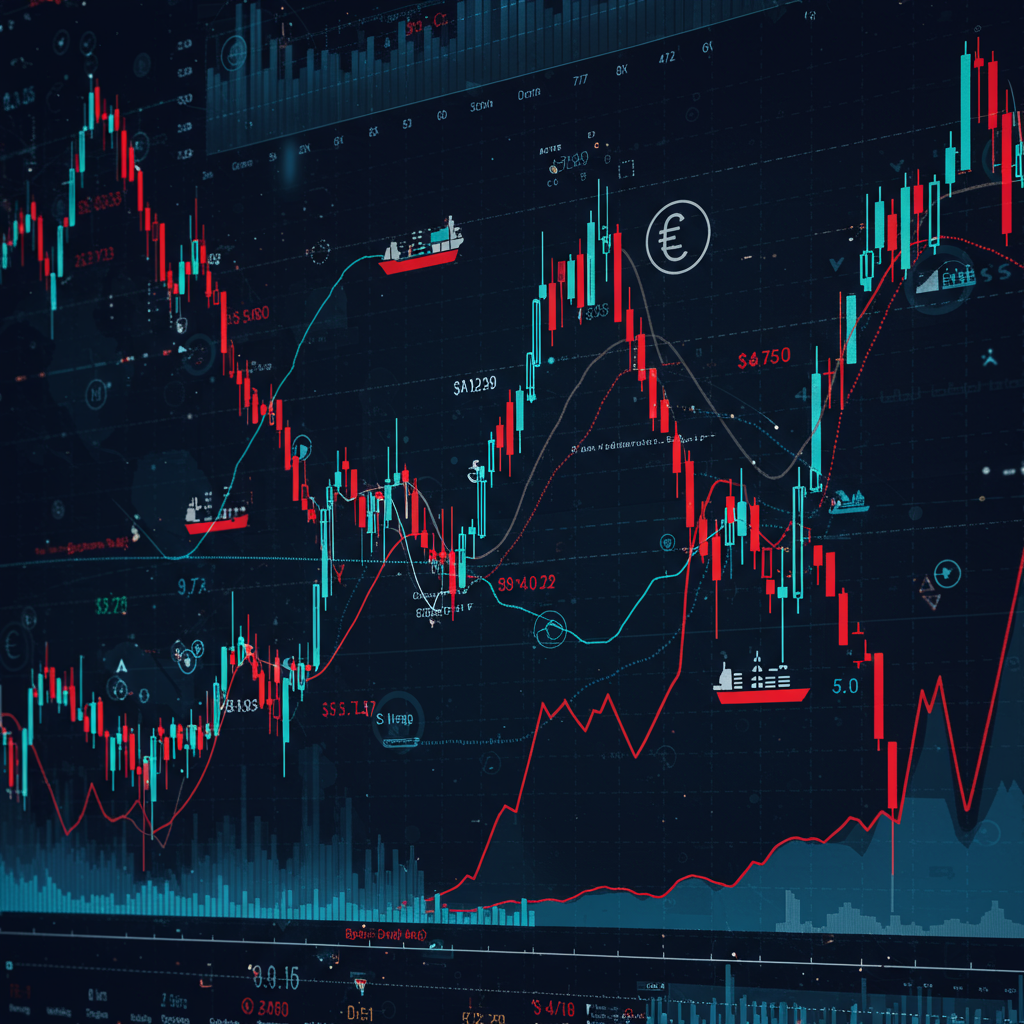Investors are watching President Donald Trump’s escalating tariff threats closely, yet the anticipated market panic seen in the past hasn’t fully materialized. Unlike the sharp downturn witnessed in April 2025 when major indices plummeted, recent reactions appear more muted. What explains this surprising resilience on Wall Street amidst renewed trade tensions and looming deadlines?
Navigating trade policy uncertainty is a constant challenge for markets. While specific sectors and individual stocks have shown sensitivity, the overall picture reveals a complex response. Understanding the market’s current stance requires looking beyond the headlines at the underlying factors influencing investor sentiment and behavior in this evolving trade environment.
Not the Same Old Tariff Panic
A Shift in Market Behavior
Remember the market’s sharp reaction in April 2025? Plans for the highest U.S. import taxes in over a century caused stocks to lose nearly 12 percent in less than a week. Treasury bond rates also saw a significant jump. This historical context is crucial for understanding the current, seemingly different response.
Fast forward to mid-July 2025. Despite President Trump issuing letters detailing new duties effective August 1st and floating ideas like blanket tariffs of 15% to 20% on many trading partners (up from a current 10%), the market has displayed varied reactions. On Thursday, July 10th, the Nasdaq Composite actually hit a fresh record high, closing above 20,600. Both the S&P 500 and Dow Jones Industrial Average also saw gains that day. This resilience occurred even as threats, including a 50% tariff on Brazilian imports, were announced.
However, the picture wasn’t uniform. On Friday, July 11th, major U.S. indices did retreat from those record highs. The Dow Jones fell over 250 points (0.6%), the S&P 500 dipped 0.3%, and the Nasdaq declined 0.2%. This shift followed news of a specific 35% tariff threat on Canadian goods starting August 1st, alongside other letters sent to numerous trading partners. Yet, even this pullback wasn’t the wholesale panic of April. Premarket trading on the following Wednesday showed slight gains in futures despite continued tariff news.
Why the Apparent Calm?
So, why isn’t Wall Street melting down like it did before? A primary reason appears to be a change in how markets interpret these threats. Many traders now seem to view President Trump’s tariff announcements as negotiation tactics rather than immediate, final policy decisions. There’s an expectation that intense negotiations will lead to carveouts or revised deals before the August 1st deadline.
Furthermore, underlying optimism about sustained economic expansion plays a significant role. Strong momentum in key sectors, particularly technology, provides a counterbalance to trade anxieties. While some voices, like JPMorgan CEO Jamie Dimon, have expressed concern about market complacency, the prevailing sentiment among many market watchers points towards resilience built on a belief that the most severe outcomes may be avoided or that the economy is robust enough to absorb some impact.
Beyond the Headlines: Nuanced Market Signals
Divergent Sector Performance
Looking closer reveals a market with split screens. While major indices saw varied movements, performance differed significantly across sectors. On July 11th, Energy was the only sector to finish in positive territory, supported by rising oil prices influenced by supply worries and tariff news.
Other sectors like Healthcare, Materials, Financials, Tech, and Industrials generally declined on days when tariffs drove major index pullbacks. However, specific stocks within these sectors sometimes bucked the trend. AI chip maker Nvidia continued its phenomenal ascent, hitting new record highs and briefly surpassing a $4 trillion market cap. AMC Entertainment saw a jump after an analyst upgrade and news of debt restructuring. Levi’s shares rose after the company raised its forecast, suggesting resilience in denim demand even under potential tariff pressure.
Safe Havens and Commodities
Trade uncertainty often drives investors towards safe-haven assets. This was evident in the commodities markets. Gold and silver prices rallied, with silver surging over 3% on July 11th to reach its highest level since 2011.
Oil prices also climbed, influenced by tariff news, potential sanctions, and reported output increases. Copper futures experienced volatility directly tied to tariff threats, pulling back after hitting a record high when a 50% duty on imports was announced. Bitcoin also saw a furious rally, surging past $118,000 to new all-time highs, partly linked to broader tech momentum and, notably, President Trump’s voiced support for cryptocurrencies.
The Tariff Tightrope Walk: Risks and Uncertainty
Impact on Corporate Earnings and Supply Chains
Despite the apparent calm, significant risks remain. A major concern is the potential impact of tariffs on corporate earnings. Companies face the decision of absorbing higher input costs or passing them onto consumers, which could affect profit margins or demand.
Sectors heavily reliant on complex global supply chains, such as technology, industrials, and healthcare, are particularly vulnerable to disruptions and increased costs from escalating trade duties. The potential for higher costs working through the economy could pressure businesses and consumers alike.
The Federal Reserve’s Dilemma
The uncertainty created by ongoing tariff threats complicates the outlook for monetary policy. The Federal Reserve must consider how tariffs might influence inflation (by raising import costs) and economic growth (by potentially slowing trade and investment).
While the Fed held interest rates steady in June, market expectations still lean towards potential rate cuts later in 2025. Investors are keenly awaiting official communications, such as the minutes from recent Fed meetings, for clues on how trade policy is factoring into their economic assessments and future rate decisions.
Awaiting the August 1st Deadline
The looming August 1st deadline for tariffs to take effect on various trading partners adds a layer of immediate tension. President Trump’s warning of “no extensions granted” puts pressure on negotiations.
Uncertainty also surrounds how proposed new tariffs, like the 35% on Canadian goods, would interact with existing trade agreements such as the USMCA. This creates confusion for businesses and investors navigating international trade. The combination of these factors means tension remains high, and volatility could increase as the deadline approaches without clear resolutions.
Frequently Asked Questions
Why isn’t Wall Street reacting as negatively to Trump’s latest tariff threats compared to earlier ones?
The market seems to have shifted its perspective. Unlike earlier periods that saw sharp downturns, investors now often view these threats more as negotiating tactics designed to push trading partners towards new deals rather than definitive, immediate policy changes. There’s also underlying optimism about economic growth and the belief that deals or exemptions might materialize, lessening the potential impact compared to the panic seen in April 2025.
What specific tariff threats from President Trump are currently influencing the market?
Recent threats include a significant 35% tariff on Canadian goods, reportedly linked to cooperation on fentanyl trafficking. Other proposed duties mentioned include a 50% tariff on Brazilian imports, 50% on copper imports, and a potential 200% on pharmaceuticals. President Trump has also suggested the possibility of broader blanket tariffs ranging from 15% to 20% on various trading partners, detailing these in letters with an August 1st effective date.
How are different parts of the stock market and commodities reacting to the tariff uncertainty?
Reactions are mixed. While major stock indices like the Dow and S&P 500 saw slight pullbacks on some days (like July 11th) following tariff announcements, other segments showed strength. Tech giants like Nvidia continued to surge, driving Nasdaq highs on previous days (like July 10th). Safe-haven assets like gold and silver have rallied. Commodities such as copper have seen volatility directly tied to tariff news. Energy stocks have also performed well, partly due to supply worries and global dynamics influenced by trade tensions.
Conclusion
Wall Street’s reaction to President Trump’s recent tariff escalations is notably different from past episodes. Instead of a uniform panic, the market is exhibiting a complex, sometimes contradictory response characterized by overall resilience driven by strong sectors like tech, a view of tariffs as negotiation leverage, and underlying economic optimism. However, this doesn’t mean the threats are without consequence. Varied sector performance, rallies in safe-haven assets, and explicit concerns from financial leaders underscore the lingering uncertainty. As the August 1st deadline approaches and more details emerge on trade deals and potential economic impact, investors will continue to closely monitor the situation, balancing the hope for negotiated outcomes against the real risks posed to corporate earnings and global supply chains.


